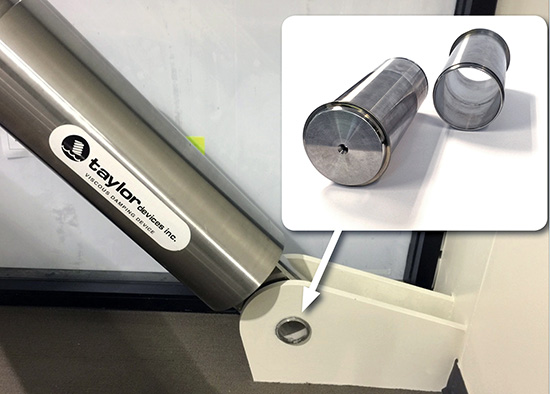|
Subscribe / Renew |
|
|
Contact Us |
|
| ► Subscribe to our Free Weekly Newsletter | |
| home | Welcome, sign in or click here to subscribe. | login |
Construction
| |
 |
January 22, 2019
Best in state: Gold award
Complexity
Reid Middleton

Project: Naval Medical Center San Diego seismic upgrades
Client: Vasquez Marshall Architects/U.S. Navy
Reid Middleton provided a comprehensive seismic analysis for the Naval Medical Center San Diego, ensuring the U.S. Navy’s facility — which sees more than 1.2 million patients every year and employs a staff of more than 6,600 — would be able to improve its reliability and operational capabilities in the event of an earthquake.
The evaluation used 3-D nonlinear dynamic analyses simulations to determine that a design-level earthquake could compromise the operational performance of the hospital. To counteract this, fluid viscous seismic dampers were installed at strategic locations throughout the facility to reduce building drifts and improve the seismic performance of the special steel moment-resisting frames’ (SMRF) connections. Work was performed while the hospital was operating normally.
In total, 242 dampers were installed in 131 SMRF bays to protect more than 850 moment frame connections throughout the hospital.
Phased installation of the dampers was choreographed with at least eight other ongoing hospital construction projects to ensure that spaces were accessed only once during construction. This minimized construction disruptions and maximized construction efficiency, resulting in substantially reduced seismic upgrade costs.
Due to construction phasing requirements, not all dampers could be installed in the same area at the same time, which presented a risk of asymmetrical seismic damping and loading if an earthquake struck during the multi-year construction duration.
To address this sequencing challenge, the world’s first-ever hollow activation pin design feature was developed and used. Once the dampers were installed, a specially designed 3-inch-diameter, high-strength stainless steel hollow pin was installed in the lower end of the seismic damper.
Small access and inspection hatches were installed in the architecturally finished walls at the location of these hollow activation pins. These hollow pins were designed to transfer overall building wind forces imposed on the dampers, but to shear off with very large seismic forces, reducing the asymmetrical influence of the partially installed dampers on the building structure.
Once all the dampers were installed within a seismically separated building block, a solid high-strength inner activation pin was slid inside the hollow pin to activate the installed seismic dampers.
This unique damper activation system was instrumental in allowing a tremendous amount of flexibility for installation sequencing and construction phasing. The “activation pin” design approach provided substantial project installation savings and allowed the hospital to remain fully functional during construction. It also allowed the seismic upgrades to be completed seven months ahead of the planned construction schedule.
Other Stories:
- National finalist: Platinum award
Structural systems
Magnusson Klemencic Associates - Best in state: Gold award
Unique or innovative applications
Stantec Consulting Services - Best in state: Gold award
Future value to engineering profession
Landau Associates - Best in state: Gold award
Successful fulfillment of client/owner needs
Golder Associates - Best in state: Gold award
Successful fulfillment of client/owner needs
Cary Kopczynski & Co. - National finalist: Gold award
Transportation
WSP - National finalist: Gold award
Structural systems
HDR/Shannon & Wilson - National finalist: Gold award
Special projects
David Evans and Associates - National finalist: Gold award
Structural systems
BergerABAM - Engineer of the Year


